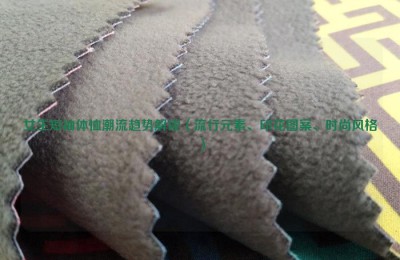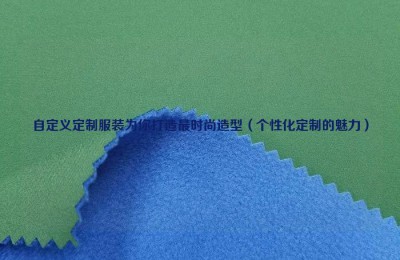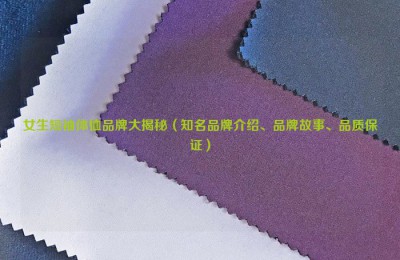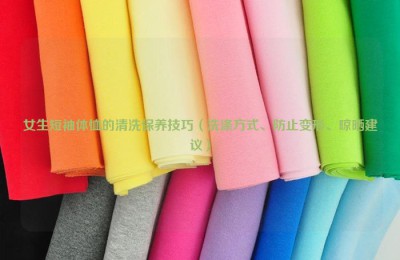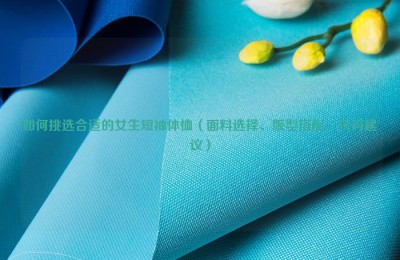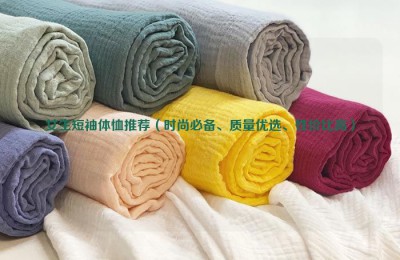In the workshop, machines are roaring and the horsepower is at full power; in front of the warehouse, machinery is collaborating and cranes are waving; on the construction site, there are many tower cranes and vehicles shuttle… “China Textile News” reporter found that recently, On the premise of epidemic prevention and control, the construction of a number of new fabric projects across the country is accelerating.
Facing the new development pattern of the industry, fabric companies are accelerating adjustments around high-end functional fabric projects or industrial chain projects. The trend of survival of the fittest in the market is becoming increasingly obvious, and the textile industry is at a high levelQuality New momentum for development continues to accumulate.
Intensive construction of projects in many places
On May 20, amid the honking of engineering vehicles, Jinpai’s high-end functional fabric production project officially started in Fujian Jinjiang Economic Development Zone (Yinglin Park).
As an important chain strengthening project in Jinjiang City’s textile and garment industry chain, the project has an investment of 500 million yuan. The production project has a planned land area of about 90 acres and a construction area of about 160,000 square meters. It plans to build standard factories, office buildings, and R&D Buildings, dormitories, warehouses and other supporting entities. At present, the project has completed land leveling and other preliminary works, and construction is expected to be completed in 2024.
Hong Yingyue, general manager of JinpaWarp Knitting Technology Co., Ltd., said that the company plans to introduce 300 sets of warp knitting and weft knitting fabrics Equipment, after reaching capacity, will achieve an annual production increase of 10,000 tons of high-end warp-knitted and weft-knitted functional fabrics. After the new project is put into production, the company’s production capacity will be doubled.
In Jiangsu Province, modern high-end textile industry projects are also in full swing. On May 19, the groundbreaking ceremony for Hengyi’s high-end fabric weaving project was held in Touzao Town, Yancheng, Jiangsu. The project has a total investment of 100 million yuan, a planned land area of 49 acres, and a new multi-story factory building and ancillary facilities of 50,000 square meters. It integrates weaving, finishing, printing and dyeing, and has a large building area, high equipment level, multiple product types, and broad market prospects. Features. After the project is completed, it is expected to achieve sales of 150 million yuan and tax revenue of 6 million yuan in 2023. After all production and effects are achieved, annual sales of 350 million yuan and tax revenue of 15 million yuan can be achieved.
In the vast central and western regions, with the continuous improvement of infrastructure and the accelerated gathering of various factor resources such as talents, the pace of textile project construction is also accelerating.
On May 18, a 100 million yuan project signing ceremony was held in Gaoshi Town, Anqing City, Anhui Province. The comprehensive textile industry project with a total investment of 518 million yuan attracted much attention. The project belongs to the spinning and weaving industry chain. After the project is completed, it will have 15 spinning production lines and 20 chemical fiber production lines. It is expected to have an annual output value of 1 billion yuan and realize tax payment of about 20 million yuan.
The graphene composite fiber and graphene interwoven fabric projects invested by Jiangxi Shenghong Technology Co., Ltd. in Wuning County Industrial Park have also started construction recently. The total investment of the project is 2 billion yuan. The project will be implemented in two phases. The first phase will provide about 100 acres of land, and the second phase will provide about 103 acres of land. It will produce and operate graphene composite fiber and graphene interwoven fabric projects.
Zheng Chengbiao, vice president of the company, said that the first phase of the project is expected to be fully completed and put into operation before the end of November, and the second phase will be fully put into operation before the end of December 2024. After the project reaches full production capacity and meets the standards, it will produce 120,000 tons of low-elastic yarn and 20,000 tons of graphene fabrics annually, with an annual output value of more than 1.5 billion yuan and profits and taxes of more than 200 million yuan.
On May 26, the groundbreaking ceremony for the Guiyang Green Ecological Printing and Dyeing Circular Economy Industrial Park and cogeneration and other supporting projects was held in Xifeng County, Guiyang City. The first phase of the industrial park has a planned land area of about 468 acres, with a total investment of 1.76 billion yuan. After completion, it will have an annual production capacity of 540 million meters of woven chemical fiber printing and dyeing fabrics and 15,000 tons of knitted blended dyeing and finishing fabrics. The annual operating income is expected to reach 3.006 billion yuan. The combined heat and power project that is supporting and constructed simultaneously with the industrial park plans to invest approximately 1.84 billion yuan. The overall planning and design is to produce 7.5 million tons of steam and generate 1.17 billion kilowatt-hours of electricity per year.
The direction of industrial upgrading is clear
The spread of the COVID-19 epidemic has had a considerable impact on the production and operation of textile enterprises, and has also allowed textile enterprises to further understand the direction of transformation and development. Many fabric companies are accelerating adjustments around high-end functional fabric projects or industrial chain projects.
“Today, the textile industry is accelerating its transformation to high-end. Many entrepreneurs have truly felt the industry’s backward production capacity through their own practical experience and learning from the growth path of industry brands. The troubles caused by oversupply and fierce competition have also made us deeply realize that the low-end, low-price, and low-value-added development model has no way out.” Liao Hongying, a market analyst with many years of experience working in textile industrial parks around the world, said in Fujian , Jiangxi’s fabric development as an example: “Only by making high-end products can differentiated competition be more effectively achieved, and enterprise development can be on the track of a virtuous cycle; on the contrary, by making low-end brands and engaging in price wars, the business will be in trouble It’s harder and more difficult.”
Liao Hongying believes that high-end functional fabric projects have great potential. “In recent years, the market consumption structure has been changing, and the concept of healthy and ecological life has gradually taken root in people’s hearts. Therefore, multifunctional fabrics with the characteristics of comfort, regeneration, environmental protection, and low carbon will be More popular in the market, functionalThe material will surely become the market’s ‘darling’. ” she said.
“We also see market opportunities and development potential for functional fabrics.” Hong Yingyue also said that the company is currently in an important strategic transformation period of optimization and upgrading, and is moving towards a company that wins with product quality and creativity, brand reputation and business management model. Important changes. Jinpai’s high-end functional fabric production project integrates R&D, production and sales, forming core competitiveness with excellent quality and unique technology, and assisting the transformation and upgrading of Jinjiang’s textile and garment industry, to create an international brand of fabrics.
The reporter noticed that the recent new fabric projects in Jiangsu, Anhui, and Guiyang do not focus on the fabric products themselves, but pay more attention to the overall layout of the industrial chain. In this regard, Liao Hongying analyzed that there are three advantages to adopting such a model: First, there are buffers in multiple product links, which can greatly improve the risk resistance and profitability of the entire system. Secondly, because it involves upstream, midstream and downstream products, it is easy to form economies of scale, and since there are no intermediate companies, there will also be a greater advantage in cost. In addition, compared with producing a single product, the company has more complete data and can respond to market changes in a more timely manner. She said: “Fabric companies with a full industrial chain layout are more likely to form multi-dimensional synergies and efficient management models, which is beneficial to the long-term development of the company.”
Industry shuffle trend is obvious
Amid the roar of project construction, some people in the industry have expressed concerns about the intensive expansion of production by fabric companies. Since the beginning of this year, the development environment of my country’s textile industry has become more complex and severe, and the difficulties and challenges in maintaining smooth operation have increased significantly. Against the background of the slow recovery of terminal consumption, once the epidemic recurs, the operations of textile companies may face greater pressure.
Data from the National Bureau of Statistics show that in the first four months of this year, the total retail sales of clothing, shoes, hats, and knitted textiles was 408.4 billion yuan, a year-on-year decrease of 6%. Among them, in April, the total retail sales of clothing, shoes, hats, and knitted textiles was 79.1 billion yuan, down 22.8% year-on-year.
The China Filament Weaving Association’s company survey in May showed that 22% of the companies surveyed were operating at full capacity, down 23 percentage points from March; 32% of the companies surveyed maintained a capacity utilization rate above 80%; 40 % of enterprises have a capacity utilization rate between 50% and 80%; some of the interviewed enterprises have an operating rate of less than 50%. 62% of the companies surveyed said that the current capacity utilization rate is lower than the same period last year, and 28% of them said that the capacity utilization rate dropped by more than 20% compared with the same period last year.
“Weak consumer demand, coupled with the decline in capacity utilization, the current textile industry is facing ‘difficulties’ and ‘worries’, and the profits of many textile companies have significantly shrunk. Choosing to expand production capacity at this time may be a good way to ‘buy the dip’ Timing, but potential oversupply may also be the ‘Sword of Damocles’ hanging over companies.” Qi Jinyue, an analyst at Longzhong Consulting, said.
Opportunities are hidden in dangers, and opportunities also lie in challenges. Qi Jinyue added: “Currently, the competition in the textile market is fierce, which requires high cost and efficiency requirements for enterprises. Production capacities with weak scale, backward technology, and high operating costs are facing elimination. New production capacity will rely on their advantages in technology, efficiency and cost. Advantages, replacing old production capacity, survival of the fittest will continue to be staged in the fabric industry, and the industry may undergo further differentiation, forming a situation where the strong will always be strong.”
“The current environment will not ‘sunshine’ for all enterprises.” Liao Hongying also has the same view. As the development of my country’s textile industry gradually matures, in the process of reshuffling, the strong ones will inevitably gain market share. The more there are, the weaker ones will gradually be eliminated by the market.
The China Filament Weaving Association pointed out that when enterprises face periodic difficulties, they must proactively adjust their development direction, make good use of relevant policies and measures, and pay more attention to technological innovation, product development and quality improvement, continue to promote the transformation and upgrading of products, equipment, and processes, strengthen corporate refined management, actively explore new needs, develop new products, and expand new applications, Give full play to its competitive advantages, take proactive actions in domestic and foreign markets, smoothly survive the pressure period, and achieve healthy development of the industry.
AAA functional fabric network JYUIYFHGE

